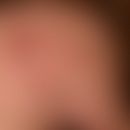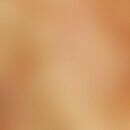Synonym(s)
dermatitis autogenetica; dermatitis autogenica; Munchausen's neurosis; Pathomimicry
HistoryThis section has been translated automatically.
Miege, 1893; Menninger, 1934; Asher, 1951
DefinitionThis section has been translated automatically.
- Feigning a clinical picture with demonstrative, often dramatic descriptions of symptoms and false information about the anamnesis on the basis of a personality disorder. The syndrome must be distinguished from simulation (conscious intention to gain a recognizable advantage) and from hypochondria (suffering from an imaginary illness without self-harm). It is assumed that a lack of impulse control, reduced anxiety tolerance, externalisation of conflicts and lack of differentiated defence mechanisms to cope with problems can play a role in the disorder. Since the disease serves as a compensation for conflicts, the patient himself does not necessarily seek healing.
- The skin as the border organ between man and the environment is often the target organ of self-injury, so that the dermatologist is confronted with the disease relatively often. It can be assumed that 0.05-0.5% of the total amount of the patient's body is attributable to Münchhausen syndrome. The type of self-harm can be caused by the application of chemicals, mechanical damage such as rubbing and scratching, thermal methods, ingestion of drugs such as thyroid homones or laxatives, introduction or injection of contaminated substances (e.g. into the bladder), application of allergens, etc. As a rule, irregular skin lesions with runners and regular base, absence of typical primary florescences, scars on the edge or other areas appear.
You might also be interested in
EtiopathogenesisThis section has been translated automatically.
The causes have not been clearly clarified. Psychodynamic, psychosocial and brain-organic factors are discussed. Addiction problems, dissociative states, borderline and antisocial personality disorders are not uncommon. Of pathogenetic significance are early childhood developments with indications of numerous traumatising real experiences, experiences of separation and loss, sexual and emotional abuse. Chronic diseases are often traceable in the family history. Cerebral dysfunctions predisposing to pseudologia phantastica may also be present.
TherapyThis section has been translated automatically.
- The dermatologist's task is to identify the artificial component of the skin change. This is the first step that can end the cycle of continuous diagnostics and the application of a wide variety of therapy attempts.
- The patient's response to the self-harm is often difficult, but usually unavoidable in order to provide the patient with professional psychotherapeutic help. This step can lead to a breach of trust between patient and doctor, as the patient feels that his physical suffering is no longer taken seriously and understood by the doctor. S.a.u. Dermatitis artefacta, see artefacts below.
LiteratureThis section has been translated automatically.
- Asher R (1951) Munchausen's syndrome. Lancet I: 339-341
- Bartsch C et al (2003) Munchausen syndrome by proxy (MSBP): an extreme form of child abuse with a special forensic challenge. Forensic Sci Int 137: 147-151
- Eckhardt A (1992) Artificial diseases (self-manipulated diseases) - An overview. Neurologist 63: 409-415
- Gushurst CA (2003) Child abuse: behavioral aspects and other associated problems. Pediatric Clinic North Am 50: 919-938
- Menninger KA (1934) Polysurgery and polysurgical addiction. Psychoanalysis Quarterly (New York) 3: 173-199
- Michalowski R (1985) Munchausen's Syndrome: A New Variety of Bleeding Type - Self-Inflicted Cheilorrhagia and Cheilitis glandularis. Dermatologica 170: 94-97
- Oostendorp I et al (1993) Munchhausen syndrome. Artifacts in dermatology. Dermatologist 44: 86-90
- Pankratz L (1981) A review of the Munchausen syndrome. Clin Psychol Review 1: 65-78
- Plassmann (1993) Psychoanalysis of artificial diseases. Shaker, Aachen.
- Rabinerson D et al (2002) Munchausen syndromes in obstetrics and gynecology. J Psychosome Obstet Gynaecol 23: 215-218
- Rothenhausler HB et al (2002) Munchhausen patients in general hospitals--Clinical features and treatment approaches in C-L psychiatry settings. Psychiatry practice 29: 381-387
- Taylor S, Hyler SE (1993) Update on factitious disorders. Int J Psych Med 23: 81-94
- Tlacuilo-Parra JA et al (2000) Factitious disorders mimicking systemic lupus erythematosus. Clin Exp Rheumatol 18: 89-93
Incoming links (8)
Artifacts; Artifacts; Back of the hand edema, chronic traumatic; Dermatitis autogenetica; Dermatitis autogenica; Excoriation, neurotic; Munchausen's neurosis; Pathomimicry;Disclaimer
Please ask your physician for a reliable diagnosis. This website is only meant as a reference.





